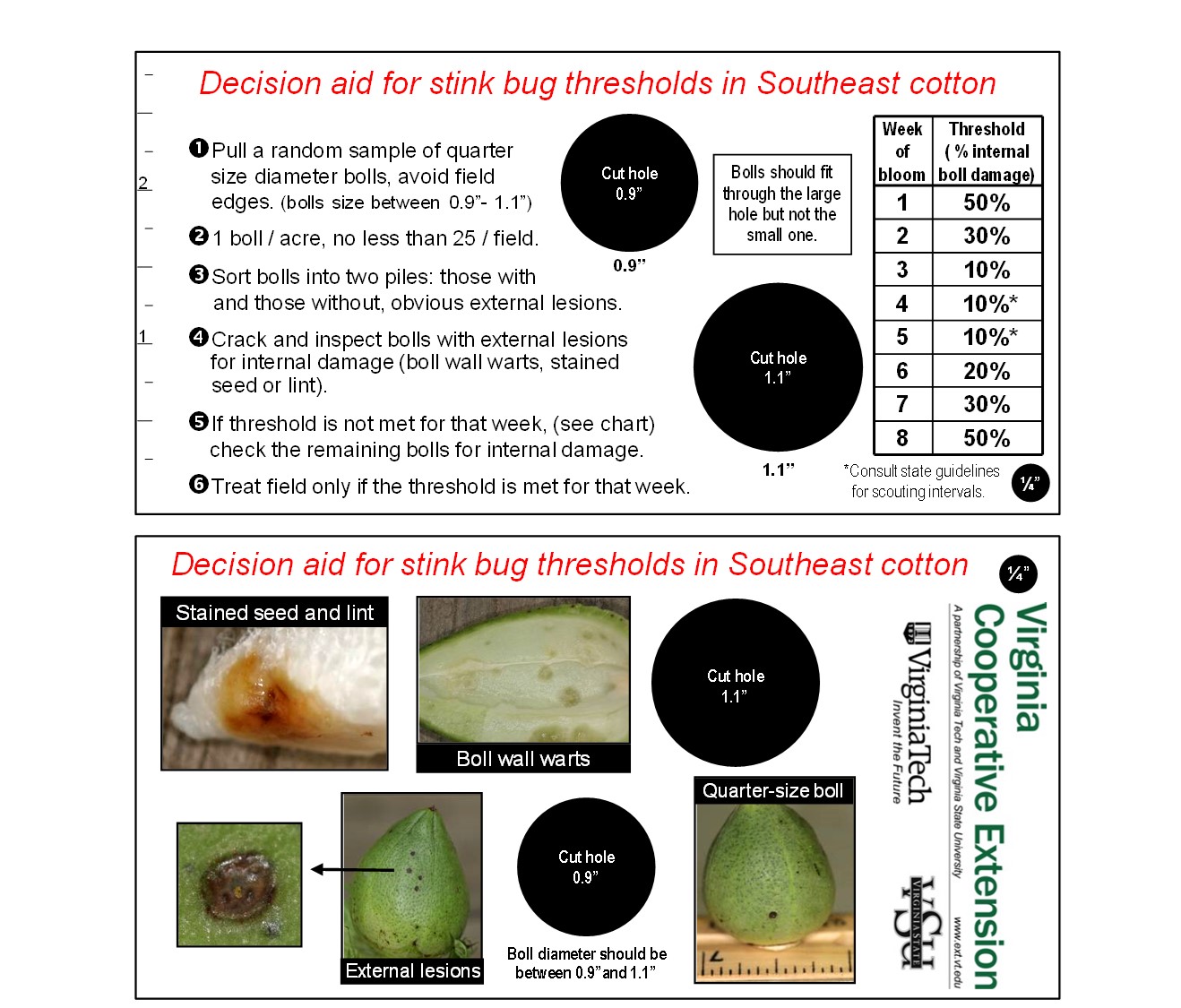We are finding (and hearing about) a few cotton fields that have reached or exceeded stink bug damage thresholds—not all by any means, but some. For the most part, these are fields in the 3rd or 4th weeks of bloom. If you are following our recommended cotton stink bug thresholds, the threshold for the 3rd, 4th and 5th weeks of bloom is 10 percent internal stink bug damage. The research that these thresholds are based on showed that these weeks are the most critical for boll production and the bolls present during this period are the most susceptible to stink bug feeding injury.
If you have not started checking fields for stink bug damage to bolls, you might want to consider starting. In each field, pull a random sample of at least 25 bolls that fit in the ‘holes’ in our scouting card (contact us or your local extension office if you need a stink bug scouting card). Using bolls in this size range guarantees that you are sampling the right boll population. Crack each boll and inspect for internal stink bug feeding injury symptoms.
What products will give you the best control of stink bugs and longest residual activity? Our field trials, and others, show pretty consistently that pyrethroids and products like Bidrin provide the best control. Insecticides in the neonicotinoid class, if applied alone, are weak. Although products do a decent job of killing the adults and nymphs, none provide much residual activity —even 7 days would be a stretch. If adult stink bugs continue move in to field, more than one application may be needed.

